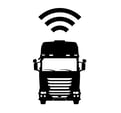4 reasons why transporters hesitate investing in route optimization software
Posted by Louis D'hondt on 05/09/2017
When exploring the transport industry, we are shocked by the number of transport companies without planning software. We often ask ourselves why well-established values lack proper route optimization tools. Time and again, the added value through cost savings is demonstrated. If it is so obvious, how come so many experienced players opt to leave their money on the planning table?

Below are four frequently recurring reasons for not (yet) investing in transport planning optimization software and how these hard nuts have been cracked.
1. It is impossible to convert the knowledge of drivers and planners into code.
To some extent, this statement is true. To some extent, because smart solutions have been developed to capture human knowledge.
Varying driver efficiency is a factor that is often cited as 'difficult to code'. To meet this requirement, a fitting route optimization package incorporates location-driver efficiency factors. Hence, the driver's experience is taken into account.
Knowledge of the area is another element that hard for a computer to judge. Nevertheless, the roadmap that is used can be finetuned. If manual adjustments consume too much time, track & trace is another option. The generated data can be used to automatically finetune the roadmap.
Unrealistic plannings. This complaint was in the news when a post company was trying to optimize the routes for mailmen. A necessary step for operational excellence is a period of 'parallel running'. During that period the tool is tested, the results are validated and the parameters are finetuned. Every instrument needs calibration.
When a planner uses the tool, a complementary cooperation will arise in which each player will have its own weaknesses and strengths. The routing tool generates a planning and the planner in its turn finetunes the result.
2. Variability in pickup volume makes a planning unreliable.
Transporters do not always demand that customers mention the size, volume or weight of the material to be transported. Assuming that a planning will be useless is jumping to conclusions.
The predictability of large groups is regularly underestimated. The larger the set of orders with a variable size each, the more predictable the size of the entire set will be.
For example: in statistics, a set of 25 orders with a volume that follows a normal distribution and a standard deviation of 5 will have a combined truck volume with a standard deviation of 1.
This means that even though multiple orders have an unknown size, a reliable optimized route can be calculated. A buffer capacity can be considered to make sure that all material can be loaded. Historical data provides valuable insights. As the amount of available data grows, the reliability of the forecasts increases and the required buffer capacity decreases along with its cost.
3. Unforeseen circumstances occur too often to rely on plannings.
Understandably, when unforeseen circumstances occur, plannings may have to be modified quickly. Events like accidents, traffic jams, incorrect opening hours etc. Appropriate routing systems provide the option to modify plannings on the fly.
To operate optimally, the package should function as a system, not like a stand-alone application. This is where a mobile app becomes crucial.

- After an optimal result is processed, drivers must immediately receive customized data.
- Information needs to be passed both ways for when an unexpected event takes place, the planner must be informed asap to minimize the impact.
- Every actor in the logistic network must stay connected.
Nowadays, stand-alone routing systems are the exception rather than the rule. The added value of a route optimization system (planning AND interaction) over manual planning is not to be underrated. Savings above 10% of transport costs are common.
4. It is difficult to integrate the application into our IT system.
This one can be seen as a sanity check for both partners: for the application and for the IT system as well.
State-of-the-art routing applications can be integrated in modern IT environments. The environment might function well at present, but is it futureproof?
Technology is evolving fast. It's easy to fall behind but closing the gap is a hard bullet to bite. Even though change can seem tough, continuous improvement is crucial.
"To improve is to change, to be perfect is to change often" - Winston Churchill


